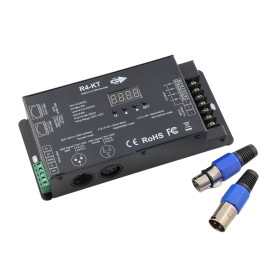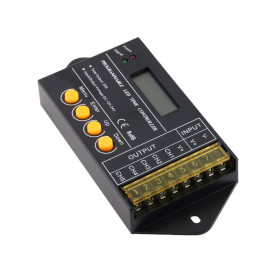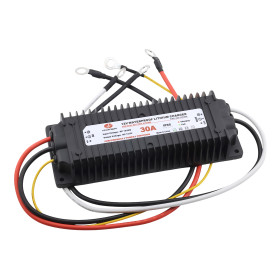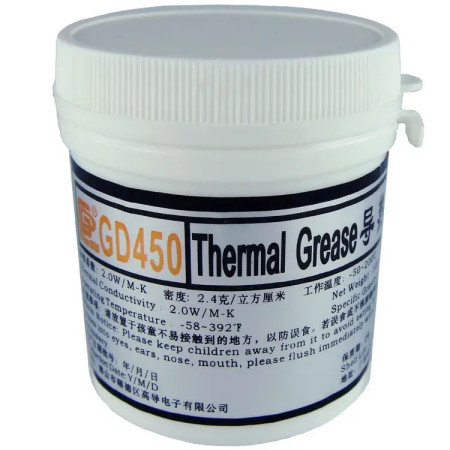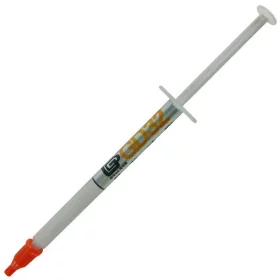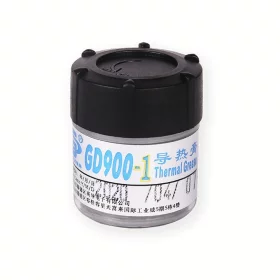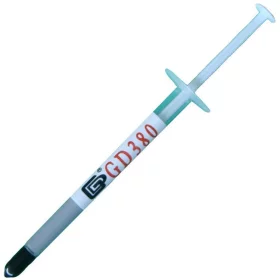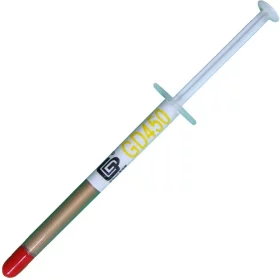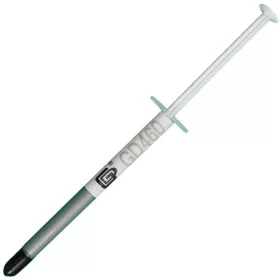Thermal conductive paste GD450, 100g
High quality heat conductive paste for heat sinks with thermal conductivity up to 2.0W/mK. The thermal paste is designed to ensure better heat transfer between the heat source - electronic component and its heat sink. It fills the unevenness between the surface of the heat sink and the surface of the cooled component and thus increases the heat transfer to the heat sink, which then has a greater cooling efficiency. By using a heat conductive paste, you will improve the overall cooling efficiency and extend the life of the cooled components. Suitable for all semiconductors (LEDs), processors, graphics cards, memory modules and more. The paste is not electrically conductive.
Thermal conductivity: 2.0W/mK
Minimum operating temperature: -50°C
Maximum operating temperature: 200°C
Specific gravity:
- Color
- Golden
- Max. operating temperature
- 200 °C
- Thermal conductivity
- 2.0 W/mK
- Amount
- 100 g
Introduction
Thermal paste is essential for effective heat dissipation between electronic components, for example between an LED module and a heatsink or between a processor and a heatsink. Proper application ensures that a uniform and thin layer – usually around 0.1 to 0.3 mm – is formed, filling the microscopic irregularities of the surfaces. This step-by-step guide explains how to achieve optimal thermal contact and thereby improve the performance and lifespan of the device.
Materials and Preparation
- Thermal paste
- Isopropyl alcohol and a clean cloth or paper towels
- Protective gloves
- Antistatic tape (when working with sensitive electronics)
Before you begin, always ensure that the device is completely powered off and disconnected from the power source. This reduces the risk of electric shock.
Procedure for Applying Thermal Paste
- Cleaning the Contact Surfaces – Start by carefully cleaning both contact surfaces with isopropyl alcohol and a cloth. This will remove dust, grease, and any remnants of old paste, ensuring a better thermal connection.
- Application of the Paste – Apply a small drop of paste, approximately the size of a pea, in the center of the surface. When the heatsink is pressed down, the paste will spread evenly into a thin layer with a thickness of 0.1 to 0.3 mm, which is ideal for effective heat dissipation.
- Mounting the Heatsink or LED Module – Place the heatsink or LED module directly onto the designated area and press it firmly to ensure even thermal contact. Proper tightening will prevent the formation of air pockets that could reduce cooling efficiency.
- Checking the Distribution of the Paste – If possible, verify that the paste has spread evenly. If necessary, carefully remove any excess paste and reapply a small amount.
Specific Guidelines for LED and Other Devices
- Apply the paste only to the areas where heat is being dissipated.
- Avoid contact between the paste and sensitive components, such as the LED diodes themselves.
- Ensure that the paste does not spread to surrounding parts, where it could affect the device’s functionality.
These steps will help achieve maximum cooling efficiency while ensuring the long-term reliability of your components.
Safety Warnings
- Disconnect the device from the power source before beginning work.
- Wear protective gloves and use antistatic tools to minimize the risk of damaging components and injury.
- Work in a well-ventilated area to avoid inhaling fumes.
- If the paste comes into contact with your skin or eyes, immediately rinse thoroughly with water.
- If you have any doubts about the procedure, do not hesitate to seek advice from a professional.
EU Importer: AMPUL SYSTEM s.r.o., Čsl. armády 641/40, 78701 Šumperk, Czech Republic,

